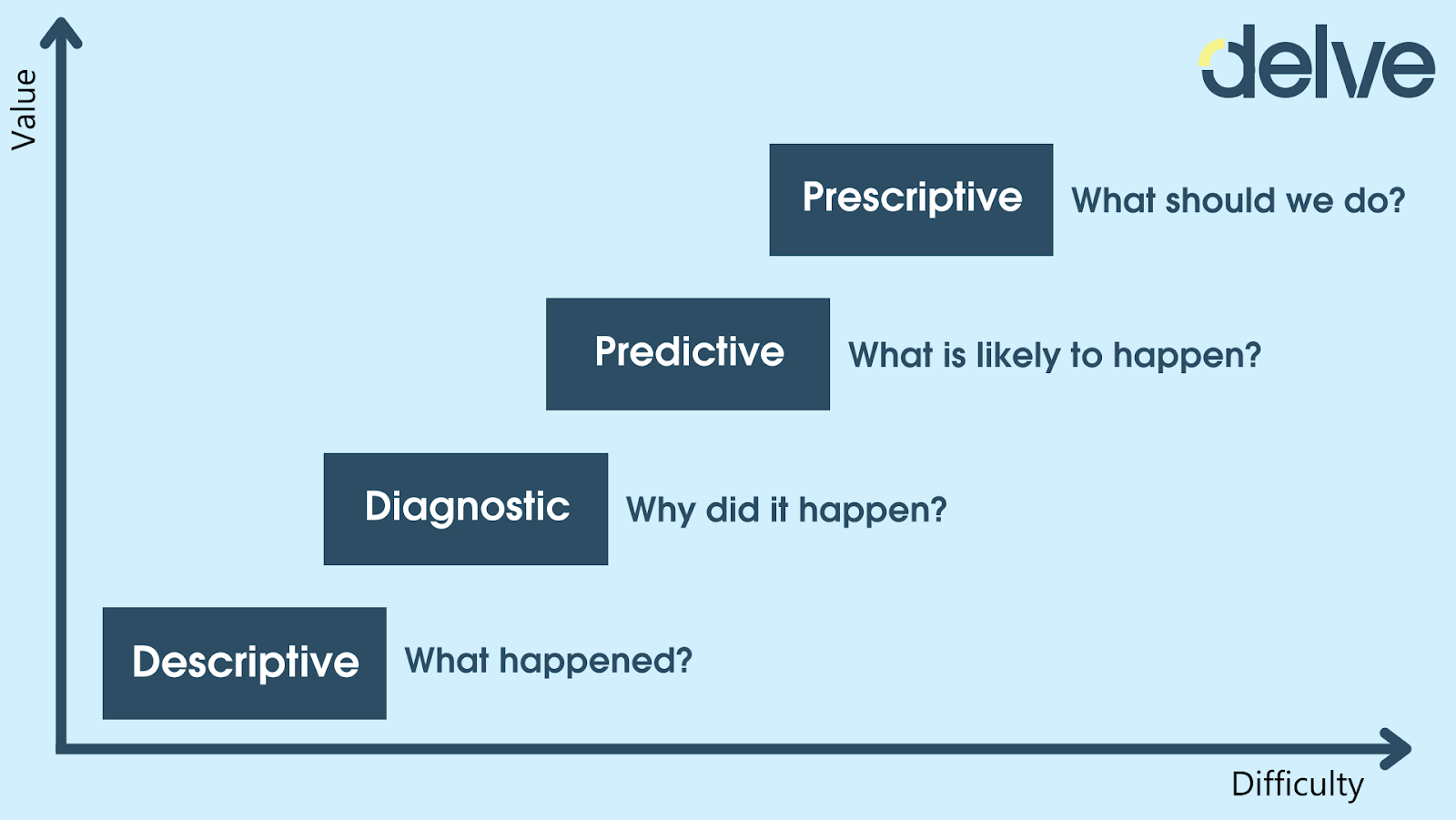July 25, 2025
June 24, 2025
June 24, 2025

In today’s information age, businesses are inundated with data from countless sources every minute.
Navigating this complex landscape is essential for success, and understanding the different stages of data analytics can significantly impact decision-making and strategy.
Here are the four main categories of data analytics that provide comprehensive insights for any organization:
Descriptive analytics focuses on summarizing historical data to provide insights into past events.
By using business intelligence tools, companies can analyze trends, track performance, and identify key performance indicators that align with their goals.
Example: monthly advertising performance summaries, demographic analyses of social media engagement
Techniques like data aggregation, mining, clustering, and summary statistics are essential for effective analysis.
Diagnostic analytics dives deeper into the data to uncover the reasons behind specific outcomes.
This type of analysis helps organizations identify causation and patterns, often through the use of interactive dashboards.
Example: Analyzing customer churn to determine key drivers.
Additionally, diagnostic analytics helps identify outliers, isolate patterns, and uncover relationships using advanced techniques like probability theory, regression analysis, and time series analysis.
Predictive analytics uses historical data, statistical models, and machine learning to forecast future outcomes.
By examining patterns and trends, organizations can anticipate opportunities and risks.
Example: Predicting next quarter's sales based on historical performance.
Techniques such as principal components analysis and sensitivity analysis enhance prediction accuracy and can uncover potential opportunities.
Building on predictive insights, prescriptive analytics recommends actionable steps based on analyzed data.
This approach helps organizations align their actions with desired outcomes to achieve strategic objectives.
These models continuously learn from feedback, simulating various solutions to evaluate performance criteria before implementation.
Advanced technologies like AI, machine learning, and neural networks enable precise recommendations based on organizational goals and constraints.
Example: Suggesting optimal pricing strategies to maximize profits.
Mastering these four types of data analytics unlocks the full potential of your data.
From understanding past trends to predicting outcomes and crafting strategies, they empower data-driven decisions, optimize operations, and drive sustainable growth.
In today’s competitive world, leveraging data isn’t optional—it’s essential.